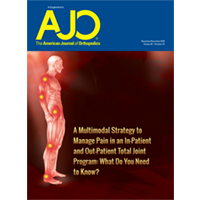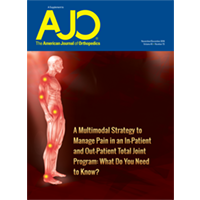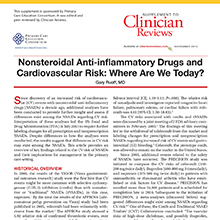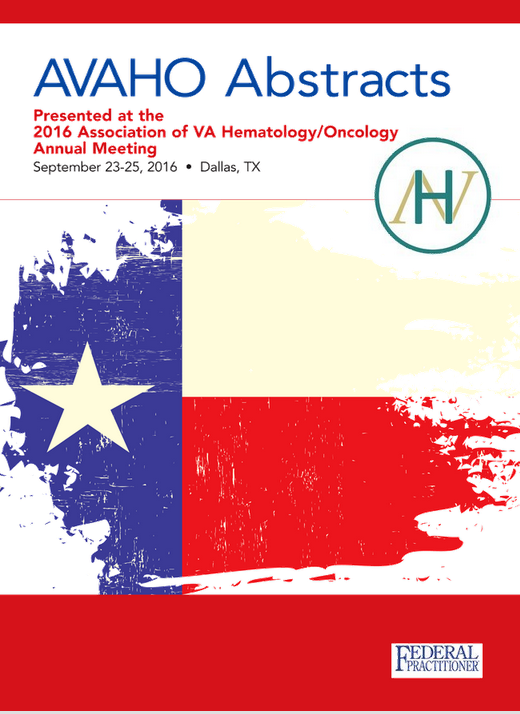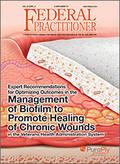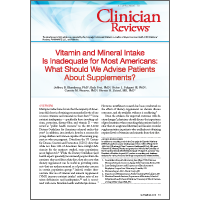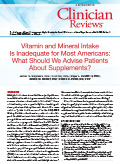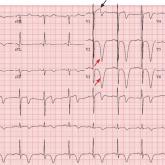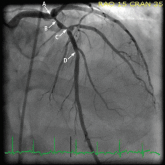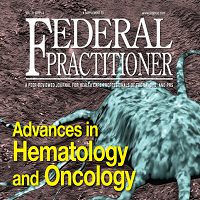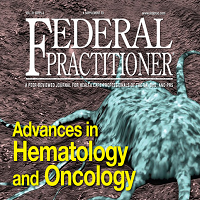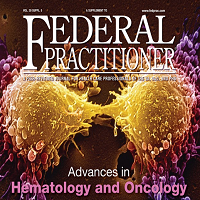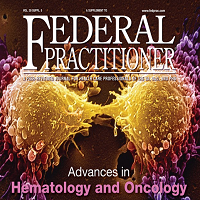User login
A Multimodal Strategy to Manage Pain in an In-Patient and Out-Patient Total Joint Program: What Do You Need to Know?
Contents
Opioid-Sparing Pain Control in Outpatient Total Joint Arthroplasty
John W. Barrington, MD
Addressing the Opioid Epidemic With Multimodal Pain Management
Michael A. Kelly, MD
Comprehensive Care for Joint Replacement (CJR) Bundle Expense in Perioperative Pain Management
Susan D. Bear, PharmD, BCPS
The Role of Liposomal Bupivacaine in Value-Based Care
Richard Iorio, MD
Contents
Opioid-Sparing Pain Control in Outpatient Total Joint Arthroplasty
John W. Barrington, MD
Addressing the Opioid Epidemic With Multimodal Pain Management
Michael A. Kelly, MD
Comprehensive Care for Joint Replacement (CJR) Bundle Expense in Perioperative Pain Management
Susan D. Bear, PharmD, BCPS
The Role of Liposomal Bupivacaine in Value-Based Care
Richard Iorio, MD
Contents
Opioid-Sparing Pain Control in Outpatient Total Joint Arthroplasty
John W. Barrington, MD
Addressing the Opioid Epidemic With Multimodal Pain Management
Michael A. Kelly, MD
Comprehensive Care for Joint Replacement (CJR) Bundle Expense in Perioperative Pain Management
Susan D. Bear, PharmD, BCPS
The Role of Liposomal Bupivacaine in Value-Based Care
Richard Iorio, MD
Nonsteroidal Anti-inflammatory Drugs and Cardiovascular Risk: Where Are We Today?
- Historical Overview
- Mechanistic Basis for a Cardiovascular Hazard
- Evidence from Meta-Analyses
- Cardiovascular Risk
- Implications for Patient Management
Faculty/Faculty Disclosure:
Gary Rouff, MD
Clinical Professor of Family Medicine,
Department of Family Practice,
Michigan State University
College of Medicine, Director of Clinical
Research, Westside Family Medical Center
Kalamazoo, MI
Dr. Rouff discloses that he has no real or apparent conflict of interest to report
- Historical Overview
- Mechanistic Basis for a Cardiovascular Hazard
- Evidence from Meta-Analyses
- Cardiovascular Risk
- Implications for Patient Management
Faculty/Faculty Disclosure:
Gary Rouff, MD
Clinical Professor of Family Medicine,
Department of Family Practice,
Michigan State University
College of Medicine, Director of Clinical
Research, Westside Family Medical Center
Kalamazoo, MI
Dr. Rouff discloses that he has no real or apparent conflict of interest to report
- Historical Overview
- Mechanistic Basis for a Cardiovascular Hazard
- Evidence from Meta-Analyses
- Cardiovascular Risk
- Implications for Patient Management
Faculty/Faculty Disclosure:
Gary Rouff, MD
Clinical Professor of Family Medicine,
Department of Family Practice,
Michigan State University
College of Medicine, Director of Clinical
Research, Westside Family Medical Center
Kalamazoo, MI
Dr. Rouff discloses that he has no real or apparent conflict of interest to report
Abstracts Presented at the 2016 AVAHO Annual Meeting
Expert Recommendations for Optimizing Outcomes in the Management Of Biofilm to Promote Healing of Chronic Wounds in the Veterans Health Administration System
A supplement to Federal Practitioner. This supplement is sponsored by Organogenesis, Inc.
Chronic non-healing wounds are a major problem for patients and wound care practitioners in the VA system. It is self-evident among experienced wound care practitioners that wound infection can delay (or completely prevent) wound healing. Biofilm is a common form of wound contamination that is now recognized to be a major factor in delaying the healing of wounds.
This supplement discusses the awareness of the biology of biofilm, its prevalence, its clinical significance, and optimal treatment approaches that need to be improved. The supplement also reviews the current status of evidence-based management of biofilm with a focus on the optimal use of PuraPly™ Antimicrobial, a native purified collagen matrix containing the antimicrobial polyhexamethylene biguanide (PHMB).
| Meeting Participants |
Gregory Shultz, PhD |
Stephen C. Davis |
Jonathan N. Brantley, DPM |
Mark Couture, DPM |
Sean L. Kersh, DPM |
Jake G. Ruff, DPM |
Patrick J. Sanchez, DPM |
Janette Thompson, DPM |
Catherine M. Wittgen, MD |
| CLICK HERE TO READ FULL SUPPLEMENT |
A supplement to Federal Practitioner. This supplement is sponsored by Organogenesis, Inc.
Chronic non-healing wounds are a major problem for patients and wound care practitioners in the VA system. It is self-evident among experienced wound care practitioners that wound infection can delay (or completely prevent) wound healing. Biofilm is a common form of wound contamination that is now recognized to be a major factor in delaying the healing of wounds.
This supplement discusses the awareness of the biology of biofilm, its prevalence, its clinical significance, and optimal treatment approaches that need to be improved. The supplement also reviews the current status of evidence-based management of biofilm with a focus on the optimal use of PuraPly™ Antimicrobial, a native purified collagen matrix containing the antimicrobial polyhexamethylene biguanide (PHMB).
| Meeting Participants |
Gregory Shultz, PhD |
Stephen C. Davis |
Jonathan N. Brantley, DPM |
Mark Couture, DPM |
Sean L. Kersh, DPM |
Jake G. Ruff, DPM |
Patrick J. Sanchez, DPM |
Janette Thompson, DPM |
Catherine M. Wittgen, MD |
| CLICK HERE TO READ FULL SUPPLEMENT |
A supplement to Federal Practitioner. This supplement is sponsored by Organogenesis, Inc.
Chronic non-healing wounds are a major problem for patients and wound care practitioners in the VA system. It is self-evident among experienced wound care practitioners that wound infection can delay (or completely prevent) wound healing. Biofilm is a common form of wound contamination that is now recognized to be a major factor in delaying the healing of wounds.
This supplement discusses the awareness of the biology of biofilm, its prevalence, its clinical significance, and optimal treatment approaches that need to be improved. The supplement also reviews the current status of evidence-based management of biofilm with a focus on the optimal use of PuraPly™ Antimicrobial, a native purified collagen matrix containing the antimicrobial polyhexamethylene biguanide (PHMB).
| Meeting Participants |
Gregory Shultz, PhD |
Stephen C. Davis |
Jonathan N. Brantley, DPM |
Mark Couture, DPM |
Sean L. Kersh, DPM |
Jake G. Ruff, DPM |
Patrick J. Sanchez, DPM |
Janette Thompson, DPM |
Catherine M. Wittgen, MD |
| CLICK HERE TO READ FULL SUPPLEMENT |
Intake of Vitamins and Minerals Is Inadequate for Most Americans: What Should We Advise Patients About Supplements?
